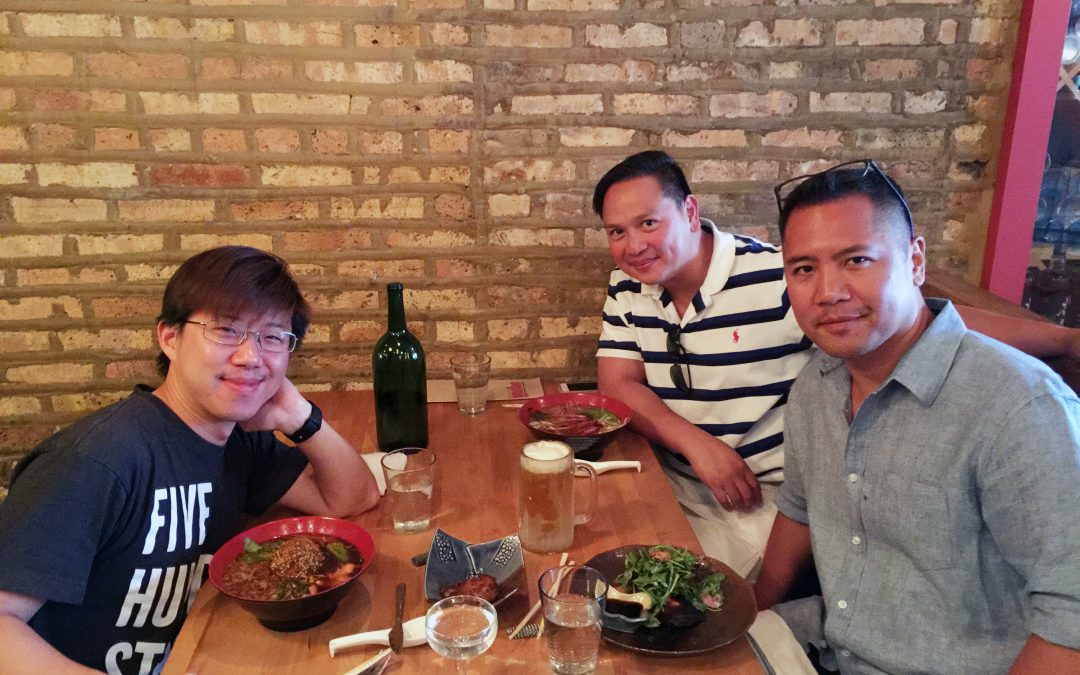
SiSok Haw Kuo is Back in Chicago!
SiSok Haw Kuo of Art of Wing Tsun (www.artofwingtsun.com) was back in Chicago from August 21-23, 2015, to train the WTK Instructors on the Luk Dim Boon Gwan (Long Pole), Classical Wing Tsun forms/movements, and to continue building our foundation of a principle-congruent Wing Tsun.
Long Pole Training:
First, SiSok showed us the body unity exercises we needed in preparation for wielding a long and heavy weapon. Body Unity is the culmination of balance, looseness and sensitivity working together to properly align your body to work in the most efficient manner possible. The arm muscles alone will not be able to generate enough power to move the long pole effectively. Subtle muscle control along with the proper body alignment is the key to explosive power.
Afterwards, SiSok trained us on the seven (or six-and-a-half) movements which make up the content of the Luk Dim Boon Gwan form. When all of the proper movement dynamics come together, performing a long pole movement seems effortless (e.g. like hitting through a golf ball, or a tennis ball on the sweet spot of the tennis racket).
Then SiSok taught us the entire form. We have seen the form in the past, but this was the first time we actually performed the entire form ourselves. The Luk Dim Boon Gwan form is short but it requires proper mental focus, control of your own movement and body unity and not allow the long pole to control it for you. It was great to see SiSok perform the form in such an economical manner that he appeared to glide through the air as he performed each movement.
Finally, SiSok showed us several partner drills that will help us understand and apply the long pole movements. There is a movement in the partner drill where we perform a controlled strike against our partner’s long pole and flow immediately into a thrust that must strike within the body width of our partner. Whenever we don’t have body unity and muscle in the strike against our partner’s long pole, we will either push away our partner’s long pole and then overshoot the strike area when we thrust, or bounce off our partner’s long pole and be forced to recover with additional movements and miss the opportunity to counter immediately and effectively.
Classical WT:
SiSok helped us fine tune our forms (e.g. SNT, CK, BT) by explaining the proper movement dynamics of each movement in the forms. We also discussed and drilled the Magnetic Zone, Plum Flower steps, Poon Sau, Pak Da, and multiple CK/BT/WD Chi Sau sections.
Note: We need to remember to take pictures next time!
Principle-driven WT:
“The challenge is not to act automatically. It’s to find an action that is not automatic. Not deliberate, not random. Some place in between.”
SiSok showed us the next group of partner training methods that will help us continue to develop our base level capabilities. Then we revisited our Chi Sau sections and were instructed to discard our ready-made techniques and combinations. We let movements of the moment happen and our form to follow its function. It was refreshing to be freed from techniques. It resulted in effortless efficiency that was both fluid and spontaneous! Counterattacks that used to take multiple techniques (e.g. Jum Sau-Lan Sau-Shift-Pak Da-Character Two against 1st CK Chi Sau section entry) is distilled to an efficient way of moving that absorbs the opponent’s attack (e.g. send our arms towards the attack, then flexing slightly, we absorb the pressure with the abdomen and slow it down and transfer it to the front and then the rear leg to give it back).
Since the aim is no longer to carry out specific movements by design, it encourages us to find our own logical, practical and efficient solutions, and frees us from limiting our questions only to those associated with ready-made techniques and combinations.
Note: We PROMISE to take pictures of this principle-driven WT the next time! We got so caught up in our training, that it didn’t cross our minds to take pictures until we were writing this blog.
After the training, SiSok held a Q&A session with us to talk about the WT concepts, principles, training methods, and teaching methods.
We would like to thank SiSok for coming back to Chicago and sharing his knowledge and experience with us at WTK! Again, if you are ever in the Bay Area or have the opportunity to bring him to your martial arts school, we highly recommend training with him.

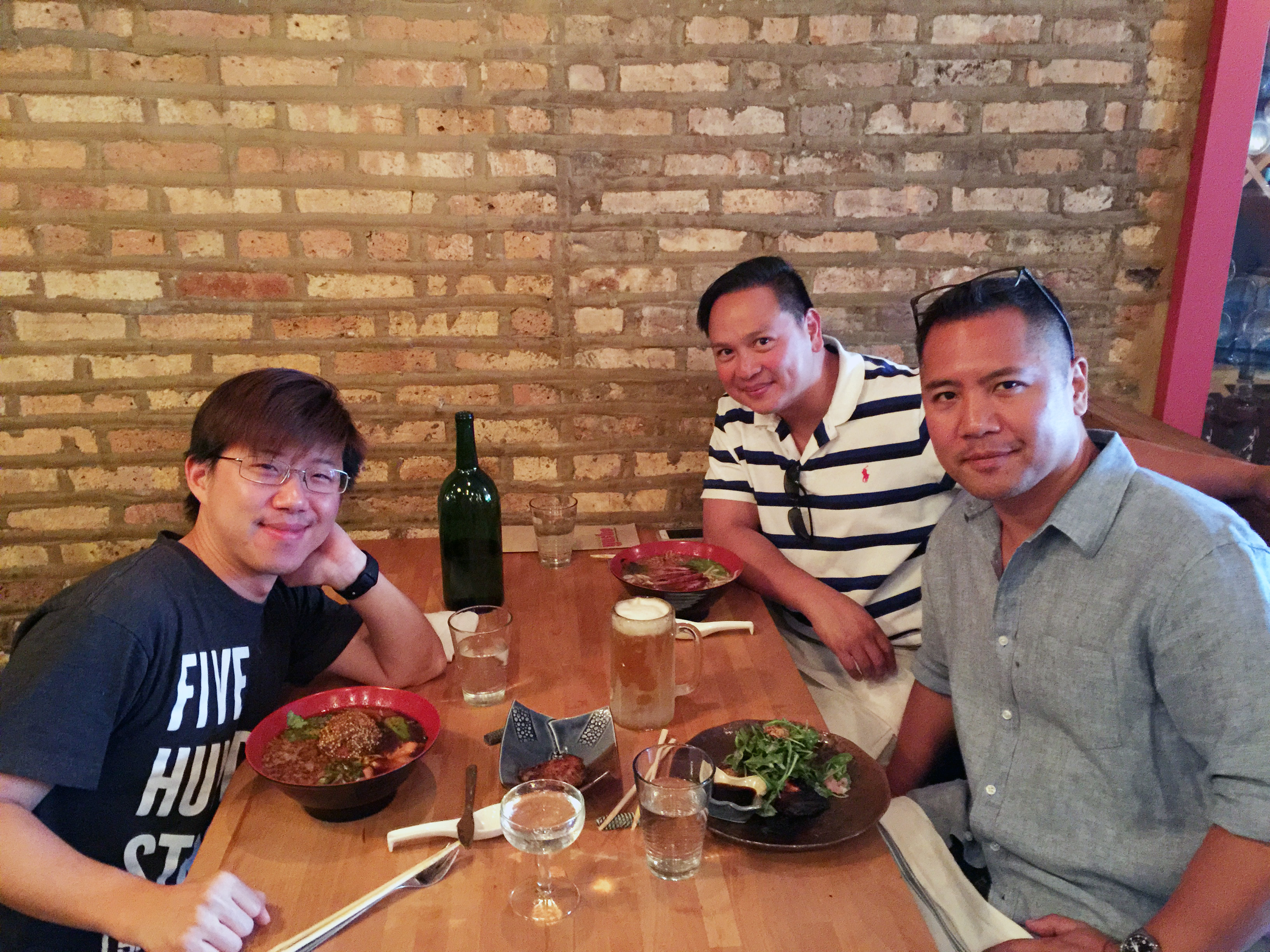
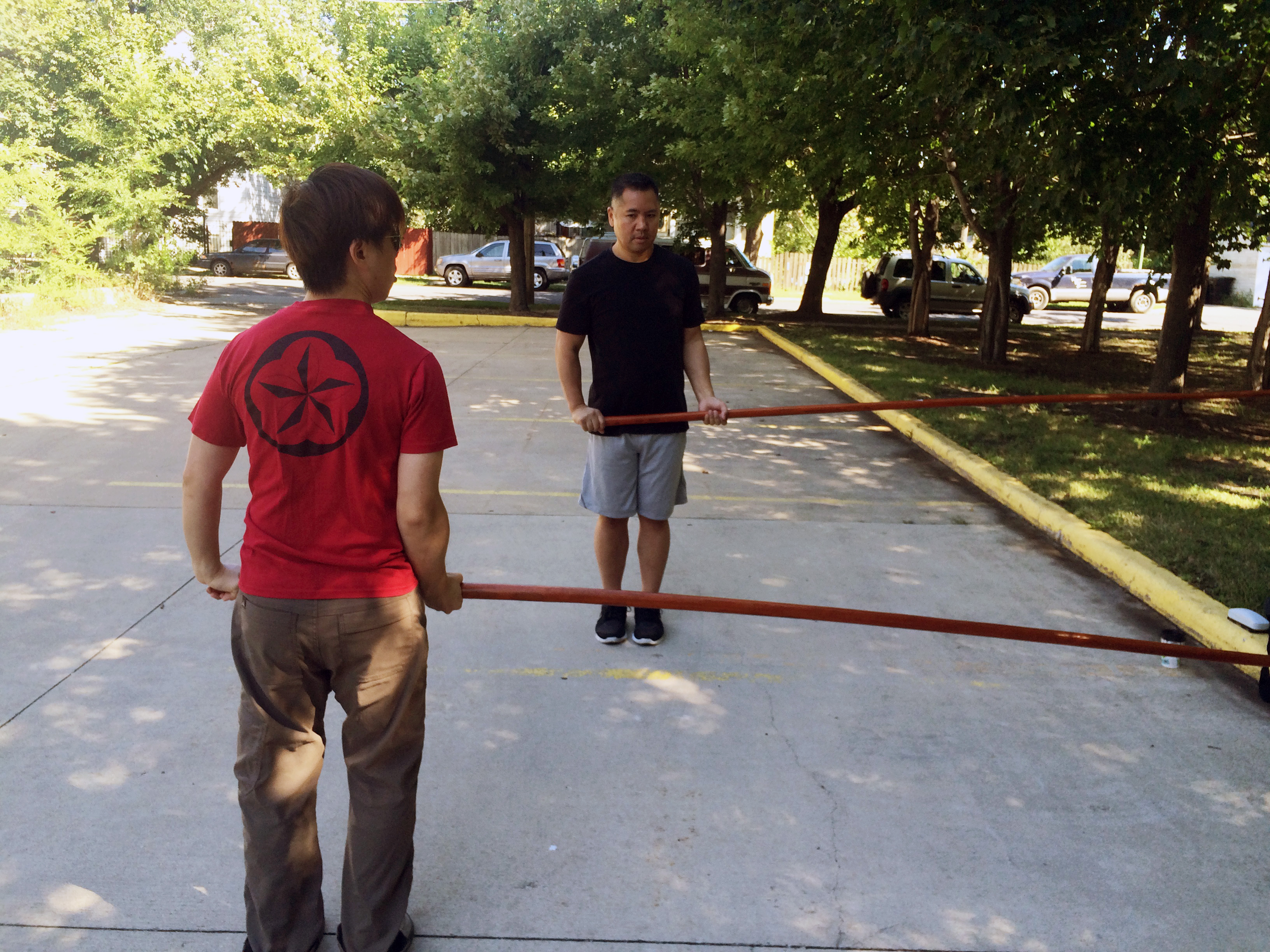
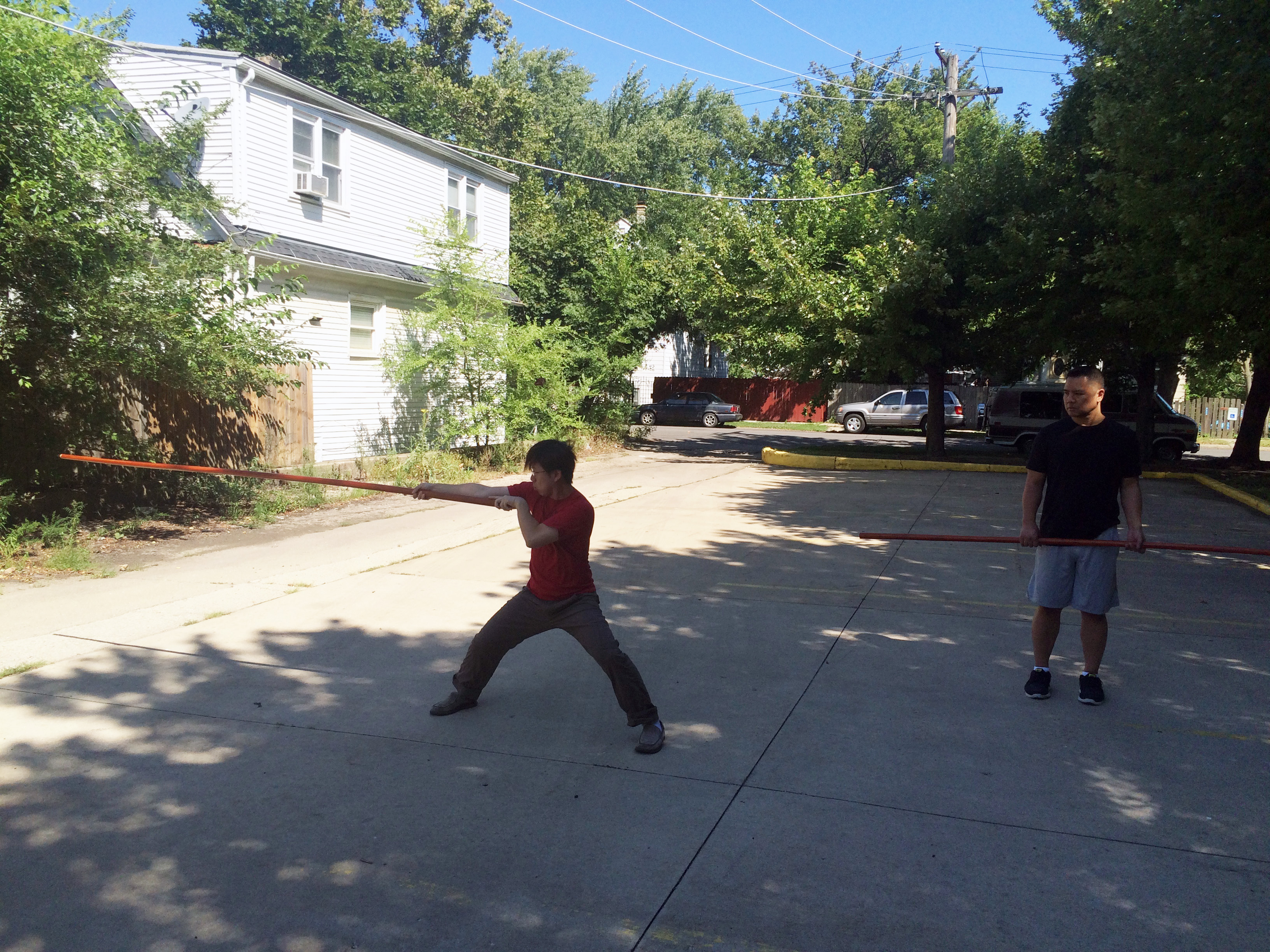

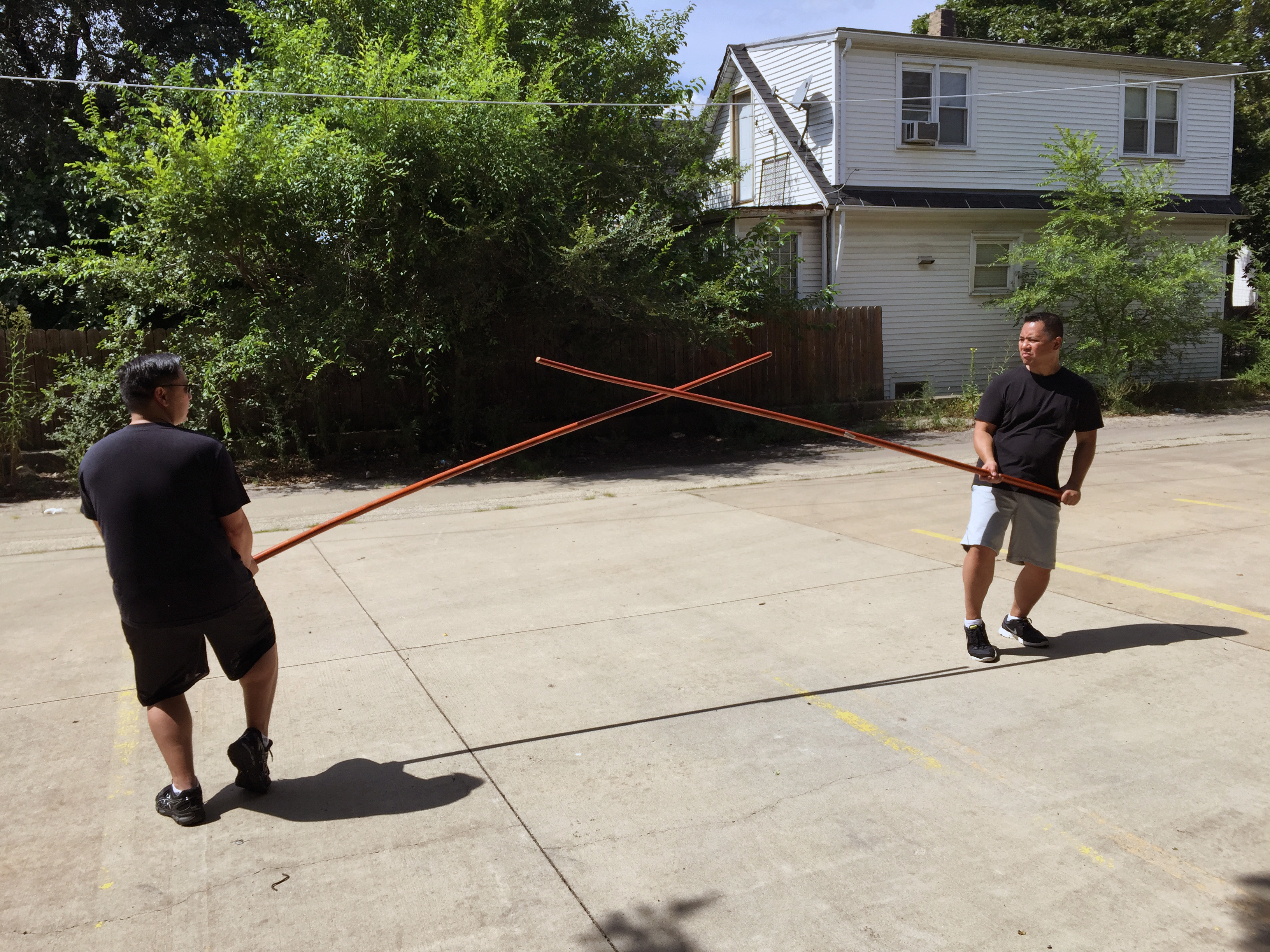
Recent Comments